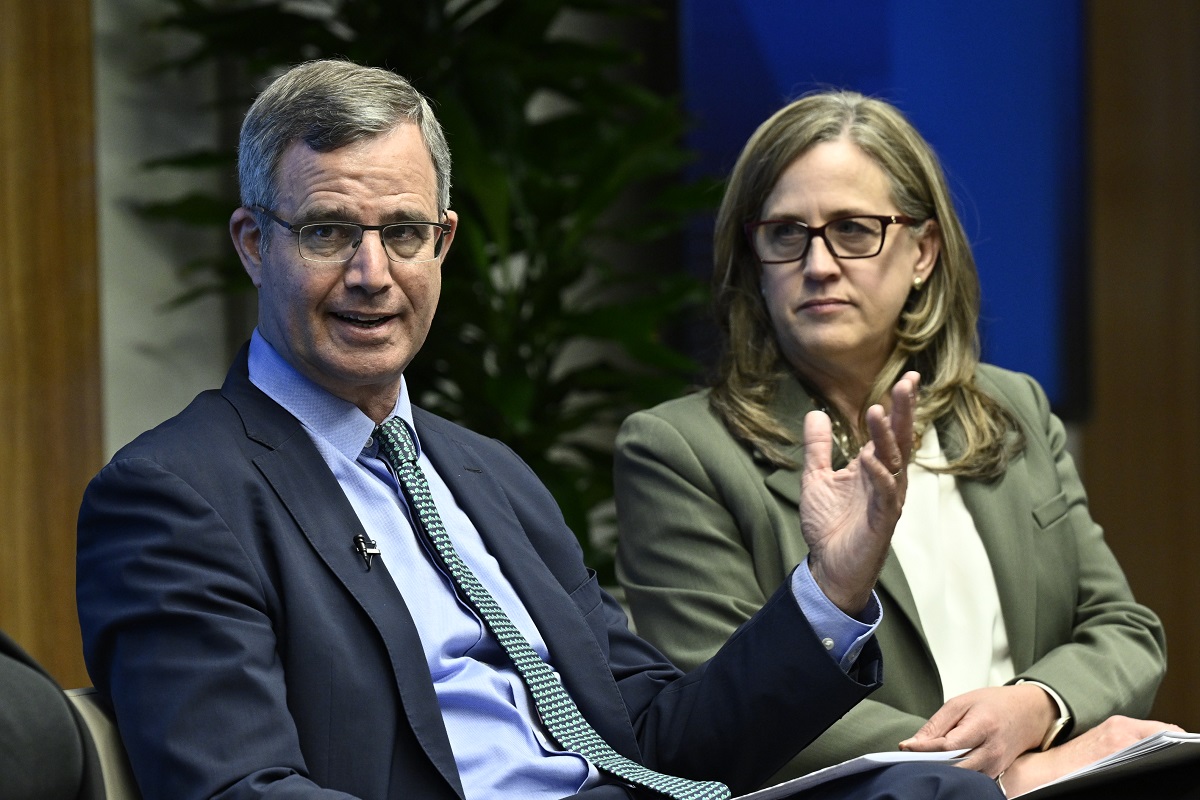Recommended

Event
HYBRID
April 16, 2024 11:00—12:30 PM ET / 4:00-5:30 PM BSTWith growing calls for both more and better targeted development finance to address rising global needs, private capital mobilisation (PCM) provides an essential part of the solution to closing the finance gaps to achieve the Sustainable Development Goals (SDGs). Only last year the G20’s Independent Expert Group called for greatly increased levels of PCM, arguing that:
[Multilateral development banks] MDBs should work systematically with the private sector to increase private financing by an additional $500 billion by 2030 including by increasing total private capital mobilization from $60 billion to $240 billion, and making concerted efforts to catalyze a significant volume of additional private finance.
That goal stands in stark contrast to current PCM rates that have largely stagnated in recent years, hovering just above US$63 billion annually (see data here and here). Development finance institutions (DFIs) need to take significant new steps and pursue new approaches to reach the required scale. For this to happen, it is necessary for accurate measurement and disclosure of PCM data so that DFIs and their stakeholders can better identify the most effective mechanisms for increasing the flow of private capital to emerging and developing economies (EMDEs).
Existing measurement and disclosure of PCM—what don’t we know?
There are currently two prevailing methodologies for calculating PCM—the MDB approach and the OECD approach. Both approaches have developed over time and contributed significantly to better understanding of the ways in which private capital is mobilised for development. However, they have key deficiencies in both measurement and disclosure that prevent consistent comparison and real analysis.
Firstly, in terms of measurement, both approaches exclude mechanisms that DFIs are increasingly using to raise working capital and to transfer risk to the private sector through secondary transactions. Here a few examples of mobilization mechanisms that are currently inadequately measured: the amount of private finance mobilized when portfolios of MDB assets are distributed to the private sector; the mobilization when MDB-invested funds exit their investments; and the additional private finance generated as MDBs begin to sell hybrid capital to private investors. As calls for DFIs to reform from “buy to hold” to “originate to share” business models increase, it is important that the tools associated with these business models are included in measures of PCM and incentivised within the institutions.
Secondly, the transparency of PCM is currently too limited for stakeholders to undertake any meaningful analysis—to understand, for example, what approaches to PCM work in what regions and sectors and with what tools. Insufficient disclosure limits the ability to assess the extent to which DFIs are effectively leveraging their capital and recycling investments. If shareholders are to effectively govern DFIs, and other stakeholders are to hold the institutions to account, it is imperative that the extent and quality of reporting improves. Specifically, in the publicly available data, PCM investments are aggregated across instruments, regions, and sectors. With tens, if not hundreds of deals combined together, and no insight offered as to the types of finance sources being mobilised, the data is unable to provide any real lessons on what works where, and how.
What is needed is a method for better measurement and more disaggregated disclosure. We need to ask ourselves: are we capturing and properly counting all the important sources of PCM and are DFIs disclosing at a level that supports serious analysis?
Moving towards more and better PCM data
Next week, CGD is hosting an event to mark the recent launch of Publish What You Fund’s new report: “Crowding in: An advanced approach for measuring and disclosing private capital mobilisation.” The report is the result of nine months of research, multi-stakeholder roundtables and expert working group meetings, and bilateral discussions. It builds on the thinking of experts and leaders (including inside DFIs and MDBs themselves) who have been grappling with how to understand and report on mobilisation as far back as 2015. The report includes a series of specific and implementable recommendations to improve the measurement and disclosure of PCM. While the recommendations in the report are ambitious, initial feedback from stakeholders suggest they are largely achievable. The report has been published as a draft for consultation allowing stakeholders to comment and suggest improvements until mid-June 2024. The intention is then to launch a final version at the World Bank-IMF Annual Meetings.
Improving measurement
On the measurement side, the report builds on those areas of consensus within the existing measurement approaches (the OECD and MDB approaches) and introduces wholly new areas. The report argues that the conceptualisation of mobilisation needs to be expanded to include both private investment in MDBs that boosts their SDG finance capacity (balance sheet mobilisation), and mobilisation that occurs when assets are transferred off MDB balance sheets (secondary mobilisation). These avenues of mobilisation are important to DFIs in terms of balance sheet management (generating and freeing up capital for investment) and in achieving mobilisation at scale. To accommodate these new instruments, the report proposes three distinct baskets of PCM:
Balance sheet mobilisation, including private DFI equity, hybrid capital, and DFI bond issuances. These activities encompass the ways in which the private sector may invest in DFIs. As DFIs are encouraged to increase their lending capacity, these instruments will become ever more relevant. The recent hybrid capital issuance by the African Development Bank is an example of the ways in which DFIs can raise private capital at scale.
Primary private capital mobilisation, including direct and indirect mobilisation through co-investment. This basket is broadly aligned to the existing MDB approach to measuring mobilisation. It captures mobilisation that happens at, or shortly after, DFI commitment in investments. Direct primary PCM occurs when a DFI has an active and direct role in attracting private investors in a transaction. Indirect primary PCM occurs when private investors co-invest with DFIs but the DFI has no active and direct role in arranging the private investment.
Secondary private capital mobilisation, including debt and equity exits, and risk transfers via securitisation or portfolio insurance. These instruments are central to DFIs transitioning to “originate to share” business models, offering the potential to transfer risk to the private sector and free up DFI capital for further investment.
Throughout the recommendations, the report seeks to address concerns about double counting, consistency, and ensuring the DFI effort and mobilised party risk are taken into consideration
Improving disclosure
The Publish What You Fund team consulted closely with the private sector on their interests in greater mobilization transparency and on their business confidentiality concerns. They are the mobilised parties whose contributions to global development are captured in the MDB and OECD reports. By understanding the expectations of institutional investors, family offices, and private equity funds, the report proposes an approach based on reporting the typology of a mobilised party (e.g., international insurance company or regional private equity fund) rather than specifically naming institutions. The report proposes a method for reporting disaggregated transaction level mobilisation data that strikes a balance between commercial confidentiality and the need for disaggregated data. The report argues for disclosure of PCM at the investment level, with data including investment value, total amount mobilised, geography, investment instrument, sector, disaggregated amounts mobilised, and mobilised party typology to be disclosed.
Importantly, while mobilised parties are comfortable with this approach, some DFIs will be reluctant to undertake the major effort needed to revamp measurement methodologies and reporting. Shareholder attention and views are critical here. They must make clear that this effort is a priority for them, along with harmonization across MDBs and regular joint reporting. The existing blanket presumption of confidentiality relating to PCM data must change to a presumption of disclosure, with exceptions only where legitimate confidentiality concerns exist.
The proposed balance protects legitimately sensitive information with the need for sufficiently granular information. Critically, improved measurement of PCM without the needed levels of disclosure will significantly weaken all efforts to understand and increase PCM. Business as usual will not lead to the changes in mobilisation volumes that we need to see. Now is the time to improve both the measurement and disclosure of PCM.
Register now to attend the report launch in-person or online.
Disclaimer
CGD blog posts reflect the views of the authors, drawing on prior research and experience in their areas of expertise. CGD is a nonpartisan, independent organization and does not take institutional positions.
Image credit for social media/web: Kiattisak / Adobe Stock






